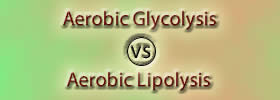Difference between VB and VB.NET
Key Difference: VB stands for Visual Basic. It is a high level programming language by Microsoft that is used for the fast development of Windows based programs. VB.NET stands for Visual Basic Network Enabled Technologies. It is one of the languages for the .NET framework by Microsoft. This language has been created specifically for VB developers. It belongs to the category of object oriented computer programming languages that is implemented on the .NET framework. VB.NET is considered to be an evolved version of Visual Basic. However, VB.Net has been reengineered to include many new features like improved type safety, streamlined language, forms packages containing Windows Forms and Web Forms, etc.
 VB stands for Visual Basic. It is a high level programming language that is used for the fast development of Windows based programs. This language has taken its roots from an earlier DOS version known as BASIC. However, it greatly differs from BASIC as VB is visual as well as event driven. BASIC stands for Beginners' All-purpose Symbolic Instruction Code. It has been created by Microsoft. It provides a graphical user interface GUI and with the help of this GUI, the developer can easily drag and drop various objects into the program. It also provides the option to manually write a program code. VB has been designed for an easy and competent software development. A program in VB is basically a series of commands that creates and manipulates variables. Programs in this language are also known as Macros.
VB stands for Visual Basic. It is a high level programming language that is used for the fast development of Windows based programs. This language has taken its roots from an earlier DOS version known as BASIC. However, it greatly differs from BASIC as VB is visual as well as event driven. BASIC stands for Beginners' All-purpose Symbolic Instruction Code. It has been created by Microsoft. It provides a graphical user interface GUI and with the help of this GUI, the developer can easily drag and drop various objects into the program. It also provides the option to manually write a program code. VB has been designed for an easy and competent software development. A program in VB is basically a series of commands that creates and manipulates variables. Programs in this language are also known as Macros.
.jpg) VB.NET stands for Visual Basic Net Enabled Technologies. It is one of the languages for the .NET framework by Microsoft. This language has been created specifically for VB developers. It belongs to the category of object oriented computer programming languages that is implemented on the .NET framework. It has evolved from the class Visual Basic language. However, backward compatibility with VB6 is not included. VB.NET is object oriented, and therefore everything in VB.NET is considered to be an object and all objects inherit from the base class Object. Microsoft Visual Basic .NET comes with Visual Studio .NET. An important characteristic of the language is that it allows garbage collection, which is supervised by the Common Language Runtime. It is useful for providing better memory management. Though, VB.net has evolved from VB, but it differs from VB in various aspects. For example- It does not use few forms of syntax that were used in previous versions of Visual Basic. Unlike VB, VB.net is fully compliant with the common language specification (CLS).
VB.NET stands for Visual Basic Net Enabled Technologies. It is one of the languages for the .NET framework by Microsoft. This language has been created specifically for VB developers. It belongs to the category of object oriented computer programming languages that is implemented on the .NET framework. It has evolved from the class Visual Basic language. However, backward compatibility with VB6 is not included. VB.NET is object oriented, and therefore everything in VB.NET is considered to be an object and all objects inherit from the base class Object. Microsoft Visual Basic .NET comes with Visual Studio .NET. An important characteristic of the language is that it allows garbage collection, which is supervised by the Common Language Runtime. It is useful for providing better memory management. Though, VB.net has evolved from VB, but it differs from VB in various aspects. For example- It does not use few forms of syntax that were used in previous versions of Visual Basic. Unlike VB, VB.net is fully compliant with the common language specification (CLS).
VB.NET adds various functionalities and features like including true object-oriented inheritance (even cross-language object inheritance), overloading, free threading, strict type checking, and a new shared development environment. There are numerous changes in vb.net. In vb6 property procedures are written using Get and Let, whereas in VB.NET, Get and Set are used. Unlike VB, VB.NET does not use keywords like Gosub and DefType.
Comparison between VB 6.0 and VB.net:
|
|
VB |
VB.NET |
|
Definition |
VB stands for Visual Basic. It is a high level programming language that is used for the fast development of Windows based programs. |
VB.NET stands for Visual Basic Network Enabled Technology. It is one of the languages for the .NET framework by Microsoft. This language has been created specifically for VB developers. It belongs to the category of object oriented computer programming languages that is implemented on the .NET framework. |
|
Type |
Interpreter based Language |
Compiled language |
|
Runtime |
VB Runtime |
Common Language Specification |
|
Type safe language |
No |
Yes |
|
Multithreaded applications |
Cannot be developed |
Can be developed |
|
Data Handling |
DAO protocol, then RDO, followed by ADO (ActiveX Data Objects) |
Data is handled using ADO.net |
|
Language |
An object based language |
A true object oriented language |
|
Parameter passing |
Most are passed by reference |
Default is passing by value |
|
Objects support default property |
Yes |
No |
|
Replacements done |
Collection QBColor, RGB DateAdd, DateDiff, DatePart, DateSerial, DateValue, TimeSerial, TimeValue |
System.Collection System.Drawing.Color Replaced by elements in System.DateTime
|
|
Structure/user-defined type declarations |
declared using the Type...End Type structure |
declared using the Structure...End Structure construct |
Image Courtesy: en.wikipedia.org, digital-loggers.com









Add new comment